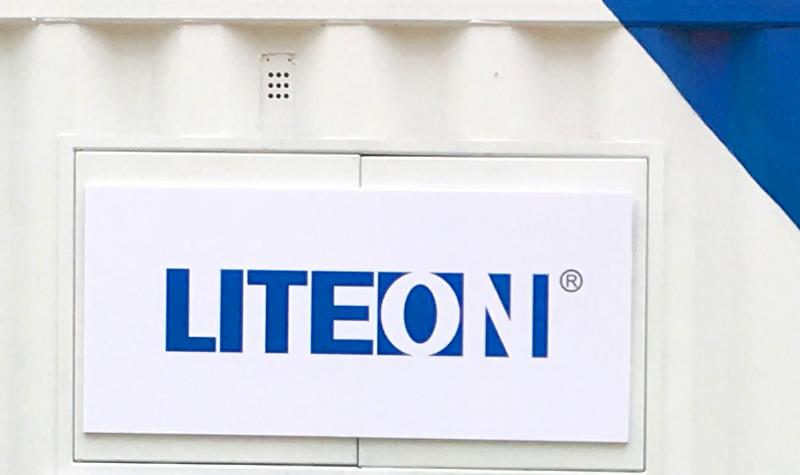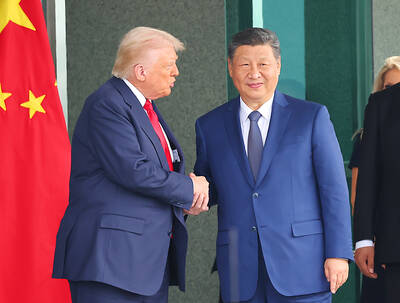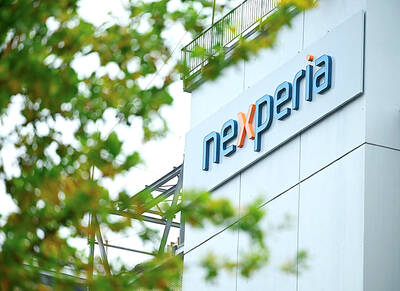Electronic components supplier Lite-On Technology Corp (光寶科技) yesterday reported that net profit last quarter fell 4 percent year-on-year to NT$2.99 billion (US$103.37 million), from NT$3.11 billion in the same period last year.
That translated into earnings per share (EPS) of NT$1.29, down from NT$1.34 a year earlier. On a quarterly basis, net profit contracted 13 percent from NT$3.45 billion, or EPS of NT$1.48, in the second quarter.
Gross margin increased to 19 percent from 16.2 percent in the third quarter last year, which was a decline from 19.4 percent in the second quarter.

Photo: Chen Rou-chen, Taipei Times
Operating profit for the third quarter grew 23 percent year-on-year to NT$3.99 billion from NT$3.35 billion, as the company recognized a substantial asset impairment loss.
‘NO IMPACT’
“In surveying the current state and likely future trends of the global CD-ROM reader industry, we have decided to recognize a goodwill impairment of about NT$700 million,” the company said in its revenue statement.
The impairment would have “no impact” on cash flow or revenue, the statement added.
Lite-On president Anson Chiu (邱森彬) said that he sees the work-from-home trend continuing through the first half of next year.
“As long as COVID-19 is still around, the demand [for work-from-home equipment] would still be around,” Chiu said, adding that “we will continue to see double-digit percentage growth in revenue from laptop-related products in the fourth quarter on a year-on-year basis.”
‘GOOD NEWS’
He is also optimistic that Lite-On’s automotive and 5G-related product categories would see positive movement next year.
Chiu also said there would be “good news” for the company’s 5G base stations in the first quarter next year.
Lite-On’s automotive products would also start contributing more seriously to revenue, he added.
“As Lite-On sheds underperforming departments, we expect gross margin and operating profit margin to keep improving in the fourth quarter on a year-on-year basis,” Chiu said.
Third-quarter revenue fell 14 percent to NT$41.33 billion from NT$48.16 billion in the third quarter last year.
Cumulative net profit for the first three quarters was NT$8.01 billion, a 15 percent increase year-on-year.
EPS for that period were NT$3.45, up from NT$3 from a year earlier.

RUN IT BACK: A succesful first project working with hyperscalers to design chips encouraged MediaTek to start a second project, aiming to hit stride in 2028 MediaTek Inc (聯發科), the world’s biggest smartphone chip supplier, yesterday said it is engaging a second hyperscaler to help design artificial intelligence (AI) accelerators used in data centers following a similar project expected to generate revenue streams soon. The first AI accelerator project is to bring in US$1 billion revenue next year and several billion US dollars more in 2027, MediaTek chief executive officer Rick Tsai (蔡力行) told a virtual investor conference yesterday. The second AI accelerator project is expected to contribute to revenue beginning in 2028, Tsai said. MediaTek yesterday raised its revenue forecast for the global AI accelerator used

TEMPORARY TRUCE: China has made concessions to ease rare earth trade controls, among others, while Washington holds fire on a 100% tariff on all Chinese goods China is effectively suspending implementation of additional export controls on rare earth metals and terminating investigations targeting US companies in the semiconductor supply chain, the White House announced. The White House on Saturday issued a fact sheet outlining some details of the trade pact agreed to earlier in the week by US President Donald Trump and Chinese President Xi Jinping (習近平) that aimed to ease tensions between the world’s two largest economies. Under the deal, China is to issue general licenses valid for exports of rare earths, gallium, germanium, antimony and graphite “for the benefit of US end users and their suppliers

Dutch chipmaker Nexperia BV’s China unit yesterday said that it had established sufficient inventories of finished goods and works-in-progress, and that its supply chain remained secure and stable after its parent halted wafer supplies. The Dutch company suspended supplies of wafers to its Chinese assembly plant a week ago, calling it “a direct consequence of the local management’s recent failure to comply with the agreed contractual payment terms,” Reuters reported on Friday last week. Its China unit called Nexperia’s suspension “unilateral” and “extremely irresponsible,” adding that the Dutch parent’s claim about contractual payment was “misleading and highly deceptive,” according to a statement

Artificial intelligence (AI) giant Nvidia Corp’s most advanced chips would be reserved for US companies and kept out of China and other countries, US President Donald Trump said. During an interview that aired on Sunday on CBS’ 60 Minutes program and in comments to reporters aboard Air Force One, Trump said only US customers should have access to the top-end Blackwell chips offered by Nvidia, the world’s most valuable company by market capitalization. “The most advanced, we will not let anybody have them other than the United States,” he told CBS, echoing remarks made earlier to reporters as he returned to Washington